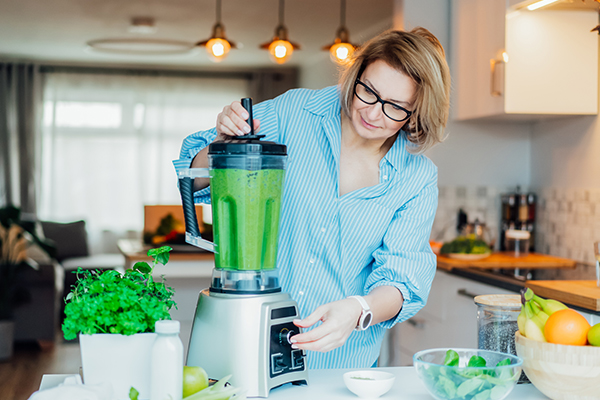
A good homemade meal can solve almost any issue. But while you're slicing and dicing in the kitchen, practice proper prevention methods to avoid certain hand or wrist injuries.
Most hand or wrist injuries occur due to repetitive overuse or accidents, which are common when cooking. Chopping, mixing, and lifting while cooking can leave your hands and wrists at risk. Cooks can fall victim to Carpal Tunnel Syndrome when applying tremendous pressure on the wrists for an extended period of time in the kitchen.
Before you prep for dinner tonight, check out these tips to prevent hand and wrist injuries in the kitchen:
Pay attention when using a knife or sharp object: The most common kitchen injuries occur from a cut where people are not paying attention, or using dull or the incorrect knife or tool. Stay focused from distractions when using sharp objects. Pumpkin carving or cutting avocados send thousands of Americans to the hospital each year. Some cuts can damage the fingers and hand, by severing tendons, requiring an unwelcome trip to the ER and surgery.
Utilize lightweight tools and dishes: Lifting heavy pots and pans can put a lot of stress on your hands and wrist, especially if you can’t get a proper grasp on it. When possible, try to slide heavier kitchen equipment rather than lifting or implement lightweight alternatives to decrease the risk of injury.
Opt for easy-to-grip kitchenware: Repetitive forceful gripping of kitchenware puts strain on the joints in your hand and wrist contributing to conditions such as carpal tunnel syndrome or arthritis. To avoid this, choose to use easy-to-grip kitchen tools which have larger handles for a lighter grip.
Use joint-friendly equipment: Fortunately, there are so many new innovations when it comes to cooking equipment that can help you to avoid overuse injuries to your hands and wrist. Try using a mixer, food processor, blender, or mandoline to take the pressure off your joints.
Listen to your body: Your body is miraculous and will warn you when you are overstraining the joints in your hand or wrist. Whether your wrist starts to hurt from chopping veggies, your palm begins to ache from kneading dough, or your fingers appear to slip while opening a jar, always stop to listen to your body!
Enjoy prepping your next meal, and follow these tips to protect your hand and wrist. If you have sustained a hand or wrist injury, contact Dr. Shrouder-Henry for his expert medical advice today.
AUTHOR: Jason Shrouder-Henry MD, MBA is a Board Certified and fellowship-trained orthopedic surgeon specializing in the hand, wrist, elbow and shoulder throughout Chicagoland.


